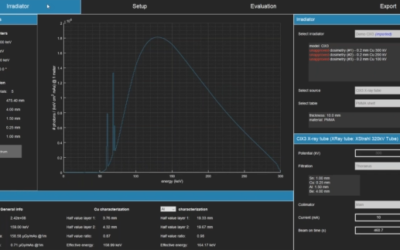PURPOSE:
The aim of this work was to compare the efficacy of two different dose fractionation schedules for radiotherapy of patients with calcaneodynia.
PATIENTS AND METHODS:
Between February 2006 and April 2010, 457 consecutive evaluable patients were recruited for this prospective randomized trial. All patients received radiotherapy using the orthovoltage technique. One radiotherapy series consisted of 6 single fractions/3 weeks. In case of insufficient remission of pain after 6 weeks a second radiation series was performed. Patients were randomly assigned to receive either single doses of 0.5 or 1.0 Gy. Endpoint was pain reduction. Pain was measured before, immediately after, and 6 weeks after radiotherapy using a visual analogue scale (VAS) and a comprehensive pain score (CPS).
RESULTS:
The overall response rate for all patients was 87 % directly after and 88 % 6 weeks after radiotherapy. The mean VAS values before, immediately after, and 6 weeks after treatment for the 0.5 and 1.0 Gy groups were 65.5 ± 22.1 and 64.0 ± 20.5 (p = 0.188), 34.8 ± 24.7 and 39.0 ± 26.3 (p = 0.122), and 25.1 ± 26.8 and 28.9 ± 26.8 (p = 0.156), respectively. The mean CPS before, immediately after, and 6 weeks after treatment was 10.1 ± 2.7 and 10.0 ± 3.0 (p = 0.783), 5.6 ± 3.7 and 6.0 ± 3.9 (p = 0.336), 4.0 ± 4.1 and 4.3 ± 3.6 (p = 0.257), respectively. No statistically significant differences between the two single dose trial arms for early (p = 0.216) and delayed response (p = 0.080) were found.
CONCLUSION:
Radiotherapy is an effective treatment option for the management of calcaneodynia. For radiation protection reasons, the dose for a radiotherapy series is recommended not to exceed 3-6 Gy.
Ott OJ, Jeremias C, Gaipl US, Frey B, Schmidt M & Fietkau R.







